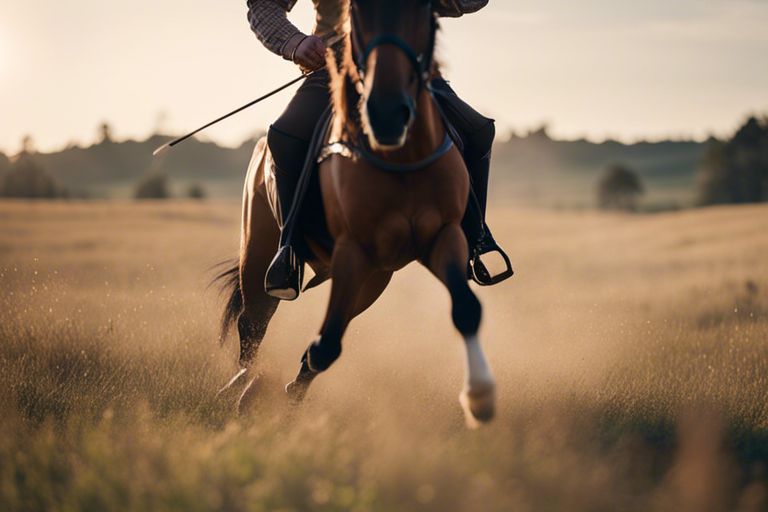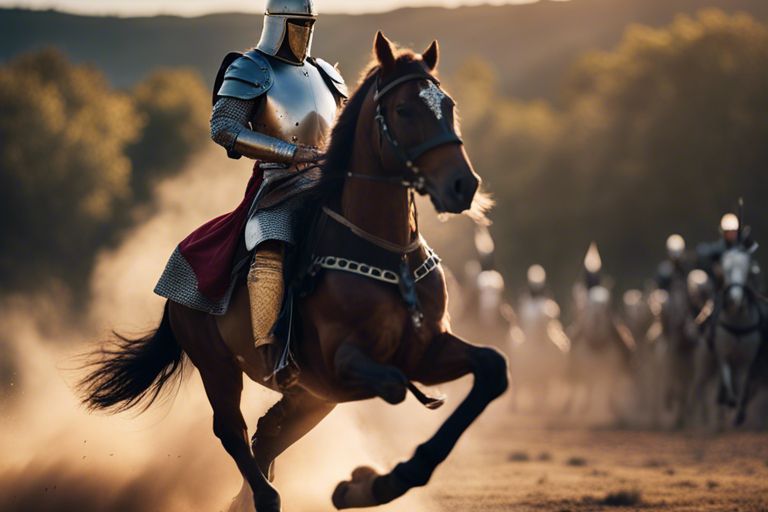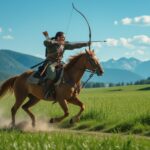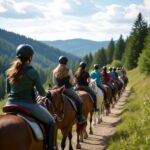You may have heard of horseback archery and wondered about this ancient practice. In this informative post, you will discover the necessary aspects of horseback archery – from the equipment you need to the basic techniques to master. Whether you are a seasoned equestrian or a skilled archer, horseback archery offers a unique and thrilling experience that combines precision and adrenaline like no other sport. Get ready to investigate into the fascinating world of horseback archery!
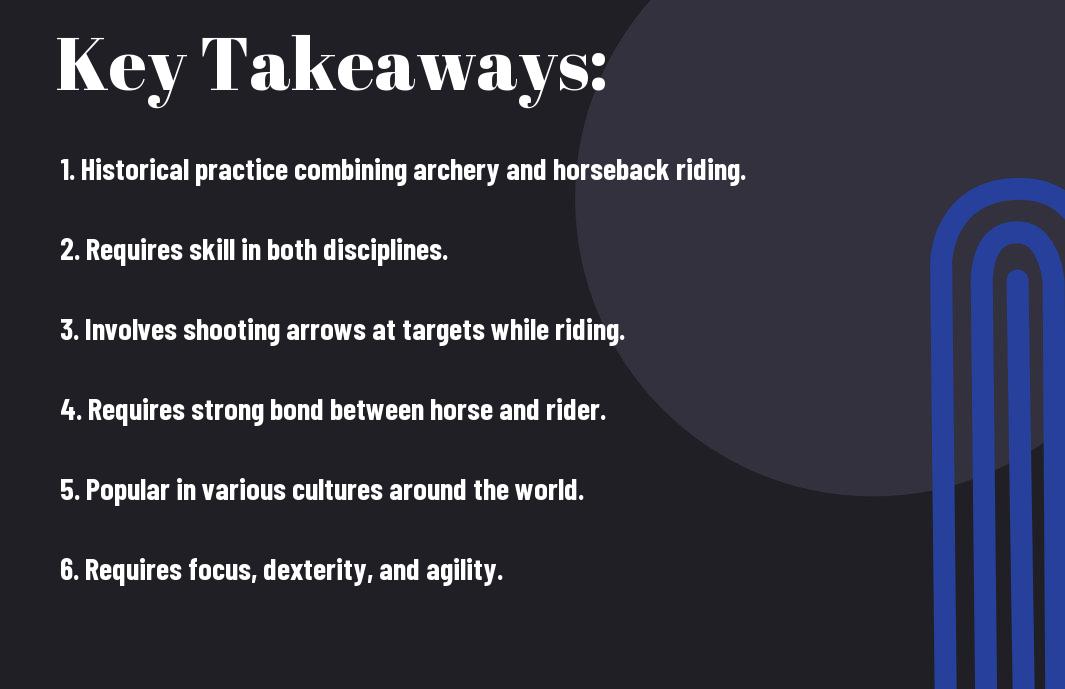
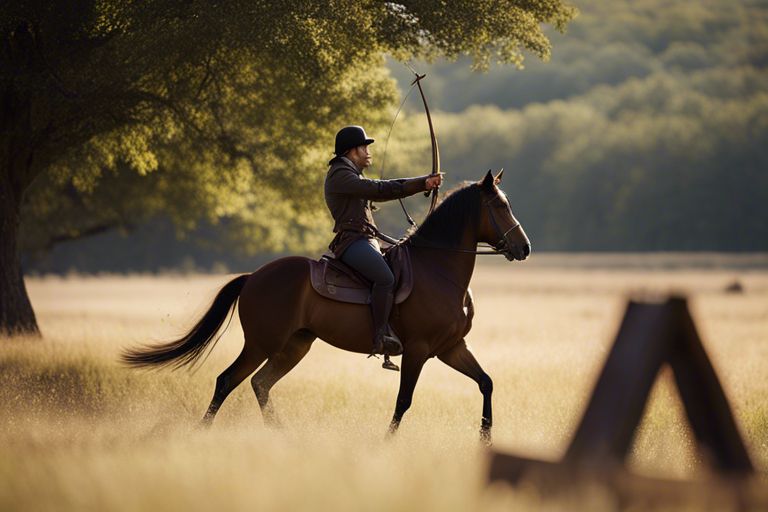
History of Horseback Archery
While horseback archery might seem like a niche sport today, its roots run deep in history. Used in warfare and hunting for centuries, horseback archery has a rich and fascinating history that spans across various cultures around the world.
Origins and Evolution
Evolution of horseback archery can be traced back to the ancient civilizations of Central Asia, such as the Scythians and Mongols, who utilized this skill in battle and as a way of life. Over time, it spread to other regions like the Middle East, Europe, and Japan, each culture adding its own techniques and style to the practice.
Cultural Significance
To understand the cultural significance of horseback archery, you have to look beyond just the technical aspects. In many societies, horseback archery was not only a practical skill but also a symbol of strength, agility, and precision. It was often associated with nobility and was a source of pride for both individuals and entire communities.
It was a rite of passage for young warriors, a way to prove their worth and demonstrate their prowess in both archery and horsemanship. The ability to shoot arrows accurately from horseback was not only impressive but also imperative for survival in times of war or while hunting for food.
Equipment and Gear
Bows and Arrows
With horseback archery, choosing the right bow and arrows is crucial. Traditional recurve bows are commonly used due to their maneuverability and quick response time. They are typically shorter in length, allowing you to easily handle them while on horseback. The arrows used for horseback archery are usually shorter and have feather fletchings to stabilize their flight.
Horseback Archery Saddle and Tack
Gear up your horse with the right saddle and tack for horseback archery to ensure safety and comfort during your practice. A specialized horseback archery saddle often has a high pommel and cantle to provide extra security, keeping you stable while shooting. Make sure to adjust the stirrups to the correct length for a secure and balanced seat.
To make your horse comfortable, consider using a breastplate and crupper to prevent the saddle from slipping during sudden movements. Additionally, a neck guard can protect your horse’s neck from accidental bowstring release, ensuring their well-being during the activity.
Protective Gear and Safety Precautions
Gear up with protective gear to ensure a safe horseback archery experience. Wearing a sturdy helmet is crucial to protect yourself from any accidental harm. Proper footwear, such as riding boots with a heel, will help you maintain a secure position in the stirrups while riding and shooting.
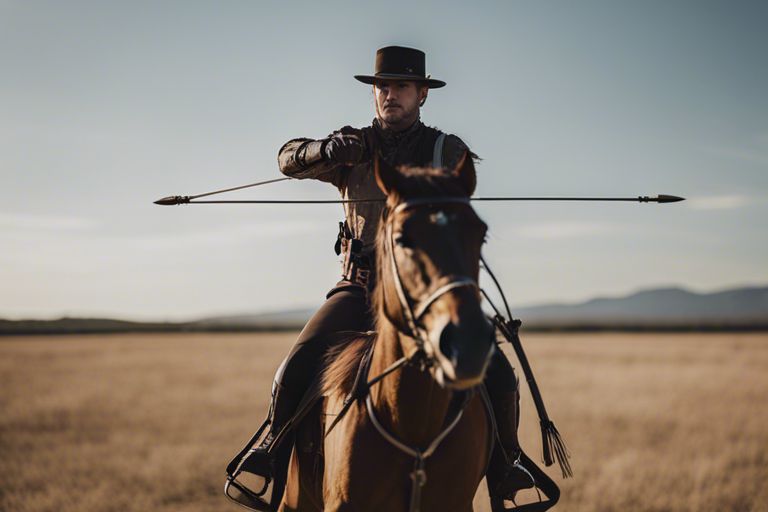
Basic Techniques and Skills
Unlike traditional archery, horseback archery requires a unique set of skills and techniques that combine precision with the ability to control a moving horse. To excel in this ancient sport, you must master the basic techniques and skills that will make you a proficient horseback archer.
Mounting and Dismounting
Techniques: Mounting and dismounting a horse while handling a bow and arrow can be a challenging task. Practice mounting and dismounting smoothly and quickly to ensure a seamless transition during your horseback archery practice. Remember to always keep a firm grip on the reins while mounting or dismounting to maintain control over the horse.
Balancing and Posture
Mounting: Balancing on a moving horse requires a solid foundation and excellent posture. Keep your core engaged and your back straight to maintain stability while riding at different speeds. Flex your knees slightly to absorb the horse’s movements and adjust your posture accordingly to stay centered and in control.
Drawing and Releasing the Bowstring
Skills: Drawing and releasing the bowstring accurately while riding a horse is a skill that requires practice and precision. Focus on developing a smooth and consistent drawing motion to ensure your shots are both powerful and accurate. Work on releasing the bowstring at the right moment to align with your horse’s movement for maximum effectiveness.
Basic: Drawing and releasing the bowstring smoothly is key to hitting your targets while horseback archery. Practice your technique regularly to build muscle memory and improve your accuracy and speed when shooting from horseback.
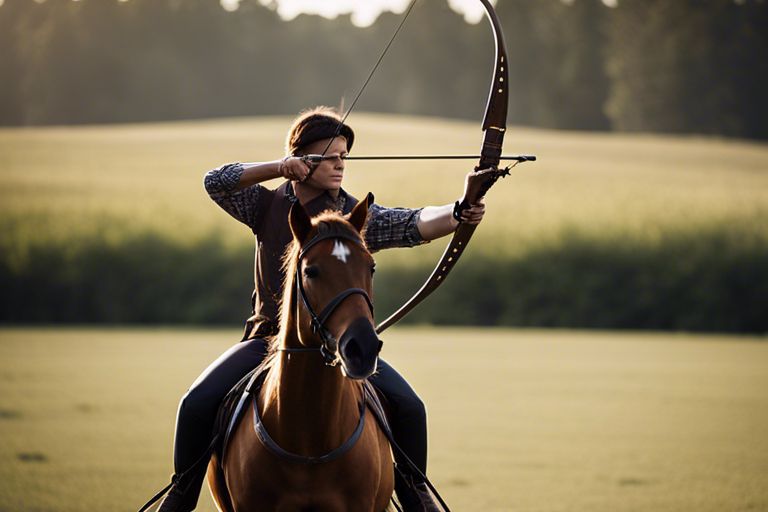
Horse Training and Partnership
Selecting the Right Horse
Not just any horse can excel at horseback archery. When choosing a horse for this discipline, you need to look for specific qualities. Your horse should be well-trained, responsive to cues, and comfortable with sudden movements and noises. Additionally, it’s beneficial to choose a horse that is agile and has a steady temperament.
Building Trust and Communication
Partnership is key to success in horseback archery. Once you’ve found the right horse, it’s crucial to build a strong bond based on trust and clear communication. Spend time getting to know your horse, working on ground exercises, and establishing a foundation of respect. Recall, your horse will be your teammate in this exciting sport, so nurturing a connection built on mutual understanding is necessary.
This bond will not only enhance your performance in horseback archery but also create a fulfilling partnership that goes beyond the sport.
Desensitizing the Horse to Archery
An important aspect of horse training for archery is desensitizing your horse to the sights and sounds associated with shooting arrows. Trust plays a significant role in this process. Start by introducing your horse to the bow and arrow gradually, allowing them to become familiar with the equipment and the noise it makes. Reassure your horse throughout the desensitization process, and be patient as they adjust to this new experience.
Any horse can learn to be comfortable around archery equipment with the right approach and trust in your relationship.
Archery Techniques on Horseback
Stance and Balance
All horseback archery begins with your stance and balance. Your stance should be stable, with your feet shoulder-width apart and your weight evenly distributed on both stirrups. Keeping a strong core and relaxed upper body will help you maintain balance as the horse moves.
Aiming and Focusing
One of the key challenges in horseback archery is aiming and focusing on your target while in motion. Your eyes should be fixed on the target, and your body should move fluidly with the motion of the horse. It’s imperative to practice your aim and focus to hit the target accurately.
Understanding the trajectory of your arrow and the movement of your horse is crucial for successful horseback archery. Take time to study how the arrow flies and how the horse moves so that you can anticipate adjustments needed to hit the target.
Shooting While in Motion
One technique that sets horseback archery apart is the ability to shoot while in motion. This requires coordination between your hands, eyes, and the motion of the horse. Practice shooting at different speeds to develop the skill of shooting accurately while the horse is in motion.
Safety Considerations and Precautions
Rider Safety
Keep safety a top priority when participating in horseback archery. Before mounting your horse, ensure that you are wearing appropriate safety gear, including a helmet and sturdy footwear. Always follow the instructions of your horseback archery instructor to prevent accidents and injuries. It is crucial to maintain a secure seat and balance while shooting arrows to avoid falls.
Horse Safety
With horseback archery, not only is your safety important, but also the well-being of your horse. Ensure that your horse is trained for this activity and remains calm throughout the training session. Remember to check your horse’s tack and equipment to prevent any discomfort or injuries during practice sessions.
Safety tip: Introduce your horse gradually to the equipment and sounds associated with archery to minimize stress and enhance the bonding experience between you and your equine partner.
Environmental Factors
- Weather conditions: Be aware of the weather forecast before practicing horseback archery to avoid any risks related to extreme conditions.
- Terrain: Choose a level and safe area for your practice, free from obstacles that could startle the horse or hinder your performance.
Knowing about these environmental factors can help you plan your horseback archery sessions strategically and ensure a safe and enjoyable experience for both you and your horse.
- Noise level: Sudden loud noises can startle the horse, so it’s necessary to practice in a quiet environment to maintain focus and prevent accidents.
- Visibility: Optimal lighting conditions are crucial for accuracy and safety during horseback archery. It’s important to avoid practicing in dim or low-light settings.
Understanding these environmental factors can help you make informed decisions and adapt your practice sessions to create a secure and conducive setting for horseback archery.
To wrap up
From above, you’ve learned about the ancient practice of horseback archery and its modern resurgence as a thrilling sport. Understanding the key components – the horse, the bow, and the technique – is vital for anyone looking to research into this unique activity. Note, safety should always be a priority, so proper training and equipment are a must.
Whether you’re a seasoned archer looking for a new challenge or simply intrigued by this dynamic sport, horseback archery offers an exciting blend of horsemanship, archery skills, and adrenaline. So, saddle up, grab your bow, and experience the thrill of hitting a target at full gallop – a truly unforgettable experience for any adventurous soul.
FAQ
Q: What is horseback archery?
A: Horseback archery is a traditional form of archery where archers shoot arrows from a horse while riding at different speeds.
Q: What equipment is needed for horseback archery?
A: The crucial equipment for horseback archery includes a bow, arrows, a quiver, a saddle suitable for archery, and protective gear such as a helmet and armguards.
Q: What are the benefits of practicing horseback archery?
A: Horseback archery can improve balance, coordination, and focus. It also provides a unique and exhilarating way to connect with both the horse and ancient traditions.
Q: Is horseback archery safe for beginners?
A: Horseback archery can be safe for beginners with proper instruction, supervision, and practice. It is important to start with a trained horse and experienced instructor to ensure safety.
Q: Where can I learn horseback archery?
A: There are specialized horseback archery schools and clubs around the world that offer lessons and training. It is recommended to research and find a reputable instructor or school that suits your needs.
